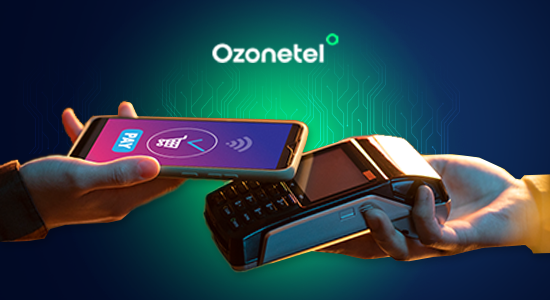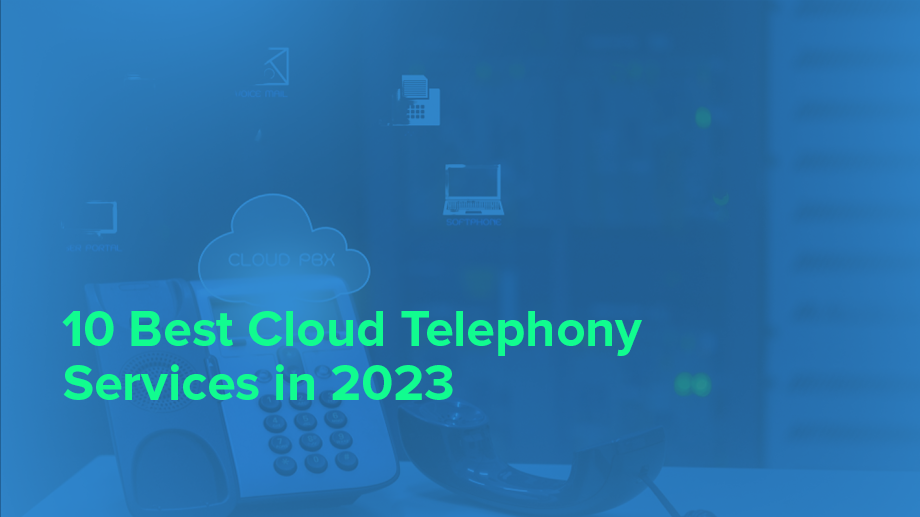- Resources
- Live Chat Support: The Ultimate Guide for 2025
Live Chat Support: The Ultimate Guide for 2025

No one likes waiting on hold or refreshing their inbox for a reply. Customers want fast, convenient support without the hassle. That’s why live chat has become a go-to option—it connects them with real agents instantly. Businesses that don’t offer it risk losing customers to competitors that do.
But adding live chat isn’t enough. How you implement it matters. Are you responding fast enough? Are your agents trained to handle complex queries over chat? Are you making it easy for customers to find and use?
This guide breaks down why live chat is essential, how to integrate it effectively, and the different ways you can use it to deliver great customer support.
In this article, we will explore:
- 1.What Is Live Chat Support?
- 2.Advantages of Live Chat Over Voice Chat
- 3.Benefits of Live Chat Support for Customers & Business
- 4.Benefits of Live Chat for Customers
- 5. How to Deploy Live Chat Support?
- 6. Best Practices to Deploy Live Chat Support
- 7. 3 Use Cases of Live Chat Support
- 8. Deliver Seamless Digital Interactions with Ozonetel
What Is Customer Obsession?
Customer obsession is about placing your customers at the core of every decision you make. It goes beyond simply satisfying their needs—it’s about actively working to improve their experience at every touchpoint, anticipating what they want, and addressing their concerns before they even raise them.
What Is Live Chat Support?
Live chat support is a customer service tool that lets you communicate with customers in real-time through a chat window on your website, app, or other digital platforms. It allows users to get instant responses without having to make a phone call or wait for an email reply.
Advantages of Live Chat Over Voice Chat

Compared to phone support, live chat offers faster response times, cost efficiency, and better scalability. In fact, according to reports, support tickets via live chat surged nearly 50% during the pandemic, highlighting its growing popularity. Some reasons behind this growth are:
- Proactive Customer Assistance: Unlike voice support, which is reactive, live chat allows businesses to engage customers before they ask for help. A chat window can pop up when a visitor lingers on a checkout page, helping to reduce cart abandonment and improve sales conversions.
- Faster and More Efficient Support: Live chat enables agents to handle multiple conversations at once, unlike phone support, which requires one-on-one interaction. This significantly reduces customer wait times.
- Clear and Searchable Conversation Records: With live chat, businesses can store and analyze chat transcripts for quality assurance and training. Unlike voice calls, which require manual review of recordings, chat transcripts are searchable, making it easier to track customer concerns and identify trends.
- Lower Operational Costs: Live chat reduces the need for a large support team, as a single agent can handle multiple chats simultaneously. This leads to lower staffing costs compared to phone support, which requires more agents to accommodate call volumes.
Wait, let me explain why live chat surpasses voice chat with an example. Suppose a customer visits an e-commerce website to check the status of their delayed order. Instead of calling customer support and waiting on hold, they use live chat, where an agent quickly retrieves their order details and provides a tracking update.
Basically, live chat allows the customer to get a fast, written response without the hassle of a phone call, making it the better option for quick, transactional inquiries.
Benefits of Live Chat Support for Customers & Business

From cost savings to better agent productivity, live chat offers multiple benefits for businesses. On the customer side, it provides instant responses, personalized assistance, and a smoother support experience. Let’s break down how live chat benefits both businesses and customers.
Benefits of Live Chat for Businesses
Major benefits of live chat for businesses are:
1. Lower Support Costs
Live chat reduces operational costs by allowing agents to handle multiple queries at the same time. Unlike phone support, where one agent assists one customer at a time, live chat enables handling multiple conversations simultaneously, reducing the need for a large support team. Additionally, integrating self-service options (such as FAQs and chatbots) helps customers resolve simple issues on their own, further reducing support costs.
2. Improved Agent Productivity
Agents can handle multiple chats at once, making live chat far more efficient than phone or email support. This reduces average handling time (AHT) and average response time (ART), allowing your team to resolve more queries in less time. Live chat also provides agents with customer history, previous interactions, and sentiment analysis, helping them respond with the right information quickly.
3. Higher Customer Conversion Rates
Live chat plays a crucial role in converting website visitors into customers. When potential buyers have questions about your product or service, they can get instant answers without leaving the website, increasing the chances of a sale. Studies show that customers who use live chat are more likely to complete a purchase and tend to spend more per transaction compared to those who don’t.
4. 24/7 Support with Automation
Unlike phone or email support, which often operates within fixed hours, live chat can offer round-the-clock assistance with the help of chatbots and automated responses. Even when human agents are offline, chatbots can answer FAQs, guide customers through basic troubleshooting, and collect information for follow-ups, ensuring continuous support without additional staffing costs.
5. Increased Customer Loyalty and Retention
Providing quick, helpful responses through live chat builds customer trust. When customers receive fast and personalized support, they are more likely to return. Live chat also helps resolve problems before they escalate, leading to higher customer retention and better long-term relationships.
6. Data Collection and Insights for Better Decision-Making
Live chat tools allow you to collect valuable data on customer behavior, common pain points, and product feedback. By analyzing chat transcripts and customer interactions, businesses can identify frequent issues, improve products/services, and optimize support strategies. Many live chat solutions also offer reporting and analytics features, helping teams make data-backed decisions to improve customer experience.
Benefits of Live Chat for Customers

Some major benefits of live chat for customers are:
1. Instant Responses and Faster Resolutions
Customers don’t want to wait on hold or send an email and wait hours for a response. Live chat eliminates long wait times by providing real-time answers. Whether a customer needs help with a product, has a billing question, or faces a technical issue, live chat ensures immediate assistance.
2. More Convenient Than Phone and Email Support
Live chat is less intrusive than phone support and faster than email. Customers can chat while browsing a website, working, or even shopping online without disrupting their day. Unlike phone calls, live chat allows them to multi-task and continue with their activities while getting assistance.
3. Personalized and Context-Aware Support
Unlike automated responses in email or IVR (Interactive Voice Response) in phone support, live chat allows for real-time, personalized interactions. Agents can see the customer’s previous interactions, browsing history, and support history, making it easier to provide tailored solutions instead of asking repetitive questions.
4. Lower Effort and Less Frustration
With live chat, customers don’t have to search for a support email, explain their issue from scratch, or repeat themselves to multiple agents. The conversation history stays within the chat, making it easy for customers to pick up where they left off. This reduces frustration and effort, leading to a smoother support experience.
5. Access to Support Anytime, Anywhere
Whether a customer is at home, in the office, or on the go, live chat allows them to get help from any device—laptop, tablet, or mobile phone. Many businesses integrate live chat into their mobile apps, making support even more accessible.
6. Multilingual and Inclusive Support
For global businesses, live chat offers the advantage of multilingual support. Customers can communicate in their preferred language, and chat tools with AI-powered translation features can bridge language gaps in real time. This makes support more inclusive and accessible for a diverse customer base.
How to Deploy Live Chat Support?

Adding live chat support to your website or app can improve customer service and boost engagement. To make the deployment smooth and effective, you need to choose the right tools, integrate them properly, and train your agents. Here’s how you can do it:
1. Choose the Right Live Chat Software
The first step is selecting software that aligns with your business needs. Consider factors such as:
- Ease of integration: Ensure the software works well with your website, CRM (Customer Relationship Management system), and helpdesk tools.
- Customization options: Look for features that allow you to match the chat widget to your brand’s style and tone.
- Automation and AI support: Some tools offer chatbot integration to handle basic queries before routing complex issues to human agents.
- Security and compliance: Ensure the software follows industry standards for data protection, such as GDPR (General Data Protection Regulation) compliance.
2. Integrate Live Chat into Your Website and App
Once you’ve selected the software, integrate it into your website and mobile app through:
- Chat widget: Place the live chat button on high-traffic pages, such as the homepage, checkout page, and support section.
- Proactive chat: Set up triggers to initiate conversations based on user behavior. For example, if a customer stays on the checkout page for too long, a chat prompt can ask if they need help.
Also, before going live, test different browsers, devices, and network conditions to ensure the chat functions smoothly.
3. Set Up Chat Routing and Response Templates
Efficient chat routing ensures customers connect with the right agent quickly. Some templates that you can implement are:
- Department-based routing: Route chats to specific teams (e.g., sales, billing, technical support) based on the nature of the inquiry.
- Skill-based routing: Assign chats to agents based on their expertise and workload.
- Canned responses: Prepare templates for common questions to speed up response times. Ensure agents personalize these messages to avoid sounding robotic.
4. Train Your Live Chat Agents
Your support team needs proper training to handle live chats effectively, so:
- Teach chat etiquette: Agents should be polite, professional, and responsive. Encourage them to keep messages clear and concise.
- Provide product knowledge: Ensure agents are well-versed in your products or services so they can answer queries confidently.
- Use escalation protocols: Train agents on when to transfer a chat to a senior team member for complex issues.
5. Monitor Performance and Optimize
After launching live chat, track key metrics to improve customer interactions such as:
- Response time: Measure how quickly agents reply to messages.
- Chat resolution rate: Track how often issues are resolved within the chat itself.
- Customer satisfaction (CSAT) score: Collect post-chat feedback to assess customer experience.
- Agent workload: Analyze how many chats an agent handles at a time and adjust staffing accordingly.
Best Practices to Deploy Live Chat Support

Setting up live chat support is more than just adding a chat widget to your website. You need a clear strategy to respond quickly, manage conversations efficiently, and provide real-time assistance without overwhelming your team. Here are the best practices to help you deploy live chat support effectively.
1. Make Live Chat Easily Accessible
If customers struggle to find your live chat, they won’t use it. So, place the chat widget in highly visible areas, such as the homepage, product pages, and checkout screens. For mobile users, keep the chat button sticky for easy access. Additionally, offer live chat on multiple channels like WhatsApp, Facebook Messenger, and in-app chat to reach customers wherever they are.
2. Set Clear Expectations for Response Times
Let customers know when they can expect a response. Display business hours for live chat and set up automated replies for off-hours. If immediate responses aren’t possible, use queued messaging to inform customers of wait times and offer alternatives like email or call-back options.
3. Use Chatbots to Handle Repetitive Queries
A well-designed chatbot can answer FAQs, collect customer details, and route conversations to the right agent. Program your chatbot to handle simple queries such as order tracking, refund policies, and appointment scheduling. For complex issues, ensure a seamless handoff to human agents without forcing customers to repeat information.
4. Train Agents for Live Chat Conversations
Train your agents to respond quickly, maintain a friendly tone, and keep messages clear and concise. Encourage them to personalize interactions by using the customer’s name and referencing previous conversations. Also, equip agents with predefined response templates for common questions to improve efficiency while keeping responses human.
5. Integrate Live Chat with Your CRM
Connect live chat with your CRM (Customer Relationship Management) system so that agents can access past interactions, customer purchase history, and preferences. This helps them provide contextual responses instead of asking customers to repeat information.
6. Offer Omnichannel Support with Live Chat
Customers may start a conversation on live chat and continue it via email or phone. Enable omnichannel support, allowing seamless transitions between different channels while keeping the conversation history intact. This avoids frustration and ensures consistent service across all touchpoints.
3 Use Cases of Live Chat Support
From assisting potential buyers and resolving issues in real-time to automating responses with AI, businesses can use live chat to create seamless, efficient interactions. Below are three key use cases that showcase how live chat can add value across different touchpoints.
1: Boost Customer Engagement

Live chat support allows businesses to engage customers instantly, providing quick responses and personalized interactions. Whether it’s through website chat, WhatsApp, or social media, it helps businesses connect with customers, offer recommendations, and close sales more efficiently.
For example, Muthoot Finance leveraged WhatsApp chatbots to enhance customer engagement and simplify the gold-buying process. Instead of relying on their 5,000+ physical branches, they introduced a digital catalog on WhatsApp, allowing customers to browse products, chat with agents, and complete purchases—all within the app. This approach helped Muthoot:
- Engage 5M+ customers through digital channels.
- Increase average order value by 2.5X in a year.
- Generate 150K+ WhatsApp impressions within nine months.
Read the entire case study here!
2: Solve Queries Instantly

Customers expect quick and transparent communication, especially when making significant purchases like real estate. Live chat support ensures that queries are addressed in real time, reducing delays and enhancing customer confidence.
For instance, Total Environment, a real estate company, implemented live chat across multiple channels—including WhatsApp, phone, and website forms—to assist homebuyers at every stage of their journey. This setup provided:
- Pre-purchase counseling, guiding customers through the buying process.
- Post-purchase support, ensuring continued assistance after moving in.
- Dedicated communication channels, offering instant query resolution.
By integrating live chat, Total Environment streamlined customer support, improving response times and ensuring a stress-free home-buying experience.
3: Drive Product Awareness

Live chat is not just for support—it can also drive brand awareness and product education. By using chatbots, businesses can provide product details, answer inquiries, and guide customers toward informed purchase decisions.
For example, Mahindra Farm Machinery turned to WhatsApp chatbots to engage with farmers and simplify access to product information. Since many farmers sought details on equipment usage and availability across multiple sources, Mahindra centralized communication through WhatsApp. This approach led to:
- Better product awareness, increasing demand and customer trust.
- Faster response times, improving customer satisfaction.
- Enhanced decision-making, helping farmers choose the right products with ease.
Deliver Seamless Digital Interactions with Ozonetel
Modern customer engagement is all about meeting customers where they are—on the channels they prefer, with the responses they need, instantly. Apart from just answering queries, live chat is about creating a seamless, proactive, and intelligent customer experience that drives sales and builds loyalty.
Therefore, businesses that leverage WhatsApp chatbots, omnichannel support, and AI-driven insights can ensure seamless, efficient, and scalable customer engagement.
Ozonetel takes this a step further with its oneCXi platform, allowing businesses to connect with customers across multiple channels—WhatsApp, voice, SMS, and social media—simultaneously. With its WhatsApp Switchboard, agents can handle both calls and WhatsApp chats in real-time, facilitating faster resolutions, quick document sharing, and an overall enhanced customer experience.
- Higher Engagement: Connect with customers across their preferred digital channels.
- Faster Resolutions: Reduce response time with real-time, AI-powered support.
- Increased Conversions: Seamlessly guide prospects through their buying journey.
Experience the power of live chat support with Ozonetel
Prashanth Kancherla
Chief Operating Officer, Ozonetel Communications
Over the past decade, Prashanth has worked with 3000+ customer experience and contact center leaders...
Chief Operating Officer, Ozonetel Communications
Over the past decade, Prashanth has worked with 3000+ customer experience and contact center leaders to comprehensively understand the need for effective and efficient customer communications at every step of their journey with a brand. Deeply embedded in today’s CCaaS ecosystem, he has been instrumental in Ozonetel's growth and contributed in various roles including product management, sales, and solution architecture.
Frequently Asked Questions
The 10 types of customers include:
- Potential Customers
- New Customers
- Confused Buyers
- Loyal Customers
- Angry Customers
- Lapsed Customers
- Need-based Customers
- Referring Customers
- Discount-Seeking Customers
- Curious Customers
The four primary types of customers are:
- New Customers – those trying your product or service for the first time.
- Returning Customers – familiar with your brand and come back for more.
- Loyal Customers – repeat buyers who trust your brand.
- Discount Customers – attracted mainly by deals or offers.
A customer is an individual or entity that purchases goods or services from a business. Customers are essential to a business’s success, as their needs and satisfaction drive growth and sales.







